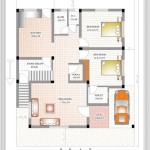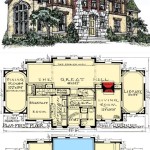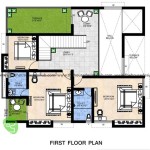Frank Lloyd Wright Prairie Style House Plans: A Timeless Architectural Legacy
Frank Lloyd Wright's Prairie Style house plans are renowned masterpieces of American architecture. Inspired by the vast, open landscapes of the Midwest, these homes embody Wright's philosophy of organic design and harmonious integration with nature.
Key Elements of Prairie Style House Plans
Prairie Style houses exhibit several defining features that set them apart from other architectural styles:
- Horizontal Lines: Wright emphasized horizontal lines to create a sense of connection with the surrounding land.
- Low-Pitched Roofs: Wide, overhanging roofs with minimal slope protect the house from the elements while blending it with the landscape.
- Natural Materials: Prairie Style homes are typically built using natural materials such as wood, brick, and stone, which complement the organic surroundings.
- Open Floor Plans: Wright designed interconnected spaces that flow seamlessly, maximizing natural light and creating a sense of spaciousness.
- Built-In Features: Furniture, lighting, and other elements are often built into the home's design, creating a cohesive and integrated living environment.
Design Principles
Wright's Prairie Style house plans adhere to the following design principles:
- Harmony with Nature: The homes are designed to complement their natural surroundings, enhancing the connection between indoors and outdoors.
- Simplicity and Function: Wright believed in eliminating unnecessary ornamentation and focusing on functional, well-crafted spaces.
- Craftsmanship: Prairie Style homes are renowned for their attention to detail and exquisite craftsmanship in materials and construction.
- Organic Unity: Every element of the design is integrated into a cohesive whole, creating a harmonious and organic living space.
Examples of Notable Prairie Style Houses
Wright's Prairie Style house plans have been realized in numerous iconic homes, including:
- Robie House (1909): A masterpiece of Prairie Style architecture located in Oak Park, Illinois.
- Taliesin West (1937): Wright's winter home and architectural laboratory in Scottsdale, Arizona.
- Fallingwater (1935): A stunning home built over a waterfall in Mill Run, Pennsylvania.
- Dana-Thomas House (1902): A grand Prairie Style mansion in Springfield, Illinois.
Benefits of Choosing a Prairie Style House Plan
Prairie Style house plans offer several advantages:
- Timeless Appeal: The classic design and emphasis on natural materials ensure lasting beauty and relevance.
- Harmony with Nature: The organic connection to the surroundings creates a peaceful and serene living environment.
- Functional and Practical: The open floor plans and built-in features maximize space and enhance comfort.
- Investment Value: Prairie Style homes are highly sought-after and retain their value over time.
Conclusion
Frank Lloyd Wright's Prairie Style house plans represent an enduring legacy in American architecture. Their emphasis on harmony with nature, simplicity, and craftsmanship creates timeless homes that provide a unique and enriching living experience. By embracing the principles of Prairie Style design, homeowners can create their own havens of organic beauty and functionality.

Prairie House Plans Monster

Frank Lloyd Wright S Frederick C Robie House A Prairie Masterpiece

Ad Classics Frederick C Robie House Frank Lloyd Wright Archdaily

Second Floor Plan Ward W Willits House 1901 Highland Park Illinois Prairie Style Frank Lloyd Wright Design Layouts Vintage Plans

Renovation Of Frank Lloyd Wright Prairie Style Villa Into A Hotel Kamiya Architects Archdaily

Frank Lloyd Wright Inspired Home Plan 85003ms Architectural Designs House Plans

2 Story System Built Design By Frank Lloyd Wright Prairie Style Ho Historic American Homes

2 Story System Built Design By Frank Lloyd Wright Prairie Style Ho Historic American Homes

Flw Heurtley House Floor 1 2 Vintage Plans Frank Lloyd Wright Oak Park

Frank Lloyd Wright Prairie Style Homes Plans Mouldings One








